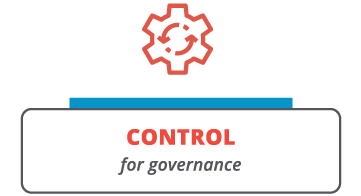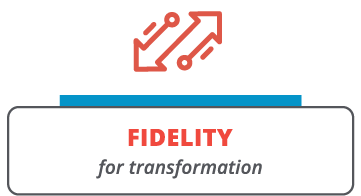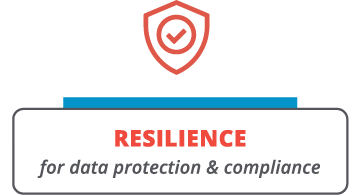We’re kicking off September with lots of new and exciting updates in the AvePoint Cloud so you can collaborate with confidence on the most advanced platform for SaaS and data management. AvePoint’s Confidence Platform, powered by AvePoint Online Services, enables transformation, governance, and compliance of SaaS applications and data for control, fidelity, and resilience. Here’s an overview of the top updates for September 2022.

Enable governance with control of your collaboration policies, access, and lifecycle.
What’s new in Cloud Governance?
Cloud Governance now offers a new dynamic service model to add more logic and flexibility within service request forms to meet complex provisioning workflows while reducing the administrative work effort required for setup and maintenance. The new dynamic service model will make service request forms smarter and more flexible with conditional logic and branching withing a single service request form. Multiple service request types will be allowed as part of the request to be executed, and in-request custom scripts will be allowed to run any validation required.
Plus, to support your organization’s records & information management (RIM) strategy in Microsoft 365, you can now build out customized library settings as part of a provisioning workflow with new library templates, making the deployment of these libraries repeatable and manageable at scale. Additionally, the new Teams policy model now enables an easier setup experience – four new individual profiles will be available (renewal, external sharing, quota management, and contact election) so users can pick and choose what they want to use, and admins will only need to configure the options you require in the individual profile.
Curious how the business world has received shared channels in Microsoft Teams and guest users as a whole? Click here for a discussion.
What’s new in Policies?
Policies now offers new rules to enforce the default sensitivity label settings of libraries and manage which label the documents within the libraries should automatically inherit. Enhanced external user policies offer additional display settings to manage guest users, automatically set an expiration date for guest users after they join a site, as well as detail the full list of users who may be in violation so you can now manually skip users by setting them to be ignored. Plus, there’s a new rule that now allows you to enforce versioning settings for all site libraries. New job performance indicators provide you with suggestions to configure a lower frequency for policies that contain specific rules whose jobs may take a longer time to complete, and new permission indicators clearly designate which type of permission is required when building and configuring rules Additionally, if you want to archive reports of the actions taken by Policies, you can now download reports for selected jobs in bulk from the Job Monitor.
What’s new in Insights?
Insights now has a new Search Center to connect security teams with search results as quickly as possible, complete with tools to export key pieces of data for management right from the dashboard. Just input any user or group name, domain name, or site/object name to get a detailed search results page. Search profiles can be configured and saved to search for specific users and/or groups in batch to view their permissions to the objects in the configured data scope, or search for a specific object to view the users and/or groups that have access to the object – all without having to recreate the search!
Search results for documents and sites include a full list of key Microsoft 365 properties, a breakdown of permissions summarized by Insights, as well as all recent activities. Plus, Insights now offers shared channel support in the upgraded Teams dashboard – view details of shared channels such as channel name, host team name, the number of channel users, number of external users and the number of teams that the shared channel is shared with.
Want to learn how to extend collaboration while minimizing potential risks? This on-demand webinar can help you.

Move, consolidate, and transform data across collaboration platforms with full data fidelity.
What’s new in Fly?
When planning for a migration, the discovery phase is crucial to obtain an accurate understanding of your environment such as number of users, number of and what kind of containers (Teams, OneDrives, Groups, mailboxes, SharePoint sites, etc.), combined size for each workload, or even if there is any content that can be left behind. With this release, Fly now offers tenant-level discovery for a simplified and less time-consuming discovery experience. Select your tenant, choose your workspace, and run your discovery. When the scan is complete, you will see a dashboard view for each selected workspace as well as a details page where you can export, filter, and search through your findings – it’s that simple! Plus, Fly now supports Teams Shifts migration.
Join this masterclass to learn about the new capabilities of Teams chat and tenant-to-tenant migration solutions with AvePoint Fly!

Ensure business continuity and compliance.
What’s new in Cloud Backup?
What’s New in Cloud Backup for Microsoft 365?
The new eDiscovery framework allows you to conduct tenant-wide metadata searches for Exchange content – search for emails across Exchange Online mailbox backup data and then choose to export, restore, or delete the backup data from a selected recovery point. Plus, Cloud Backup can now detect any potential ransomware events or unusual activities in SharePoint Online –the Microsoft 365 Unusual Activities Analysis Report now supports detecting and reporting suspicious SharePoint Online sites. Once a suspicious event is detected in OneDrive for Business (and now SharePoint), you’ll receive an email notification alert so you can review the suspicious user activity and, if needed, roll data back to a safe point directly from the report (which is included as part of the Cloud Backup for Microsoft 365 service).
What’s New in Cloud Backup for Azure?
A new report is now available to monitor subscription details, status, and the utilization of enabled services. Plus, you can now choose to use your own Amazon S3 storage or Amazon S3-Compatible storage to store Azure backup data.
What’s New in the ReCenter Portal?
In addition to facilitating the recovery of personal data from OneDrive for Business and Exchange, ReCenter now offers self-service recovery of SharePoint data that is owned by the current user. Plus, if you have strict record management policies, you may prefer to not recover data back to its original location but rather obtain a local copy of that data. With this release, when you click a stub to access a restore page in ReCenter, you can now export the file and download it locally.
Check out this blog post to learn why data backup and restore are a critical part of the cloud security equation that so many organizations are missing.
What’s new in Cloud Records?
Cloud Records now offers bulk updates of physical records so you can save time by updating the metadata of multiple physical records in one action. You can now configure retention rules to add and define lifecycle outcomes of content in archival repositories. Plus, new integration with ReCenter is now available, so when moving content to an archive location, stubs can now be retained in place with a customized message to alert end users that the item has been moved. You can also choose to include the restore link for end users, which will take them to ReCenter to conduct their own content restore. New interactive dashboards allow you to jump straight to report details right from the Dashboard, and multiple disposal holds can now be placed on an item. Plus, new manual approval options are now available to define manual approval processes.
Watch this on-demand webinar to learn how to simplify and manage your archiving and records management process with Cloud Records.
What’s new in Cloud Archiving?
Cloud Archiving optimizes cloud storage by helping you reduce storage costs and improve data quality by removing unnecessary and stale content from Microsoft 365. Last release we introduced integration with the ReCenter portal, and with this release its easier than ever to restore archived content with minimal IT involvement! Users can now skip the stub preview and jump directly to the ReCenter page for that document, as well as download a copy of the file as an alternative to restoring the file back to Microsoft 365. Meanwhile, site owners can now search and restore archived SharePoint team site content directly in the ReCenter portal. Plus, you can add your organization’s logo and customize the message and footer text shown in the stub ReCenter workflow.
Discover how to maximize your Microsoft 365 investment without maxing out your storage costs via this free eBook.
What’s new in Confide?
For increased security when outside sharing or document leaks are of concern, Confide now offers the option to add watermarks to projects. New pre-defined templates are now available to offer additional support in the project creation phase to make project creation as seamless and efficient as possible. Users will now be able to build out their own personal project libraries by cloning existing projects and saving custom templates, and as part of Confide’s keyword search, users can perform project-specific searches on specific folders and documents. New inline task management options now enable centralized workflow management when requesting specific tasks to be completed, such as document requests and reviews. Plus, users will now have access to useful metrics and insights to help guide the success of their projects, and Confide now provides users their own unique document views by project so they can now see all documents based on a specific status, removed from their nested folder location, reducing the time it takes to drill into folders to see what documents are new, in review, or completed.
Preparing for a merger or acquisition and want to maximize the security and efficiency of your deal? Here’s how a virtual data room can help.

MSPs, We’ve Got You Covered with New Elements Platform Updates!
What’s new in the Elements Platform?
Last release, we introduced Nitro to provide built-in monitoring, provisioning and templatizing capabilities via Insights and Policies, and with this release Elements provides even more flexibility with new options to customize settings when creating and applying templates. When creating templates, you can now view Insights definitions as well as enable/disable sensitivity and exposure definitions. Select the scope you want for Policies and view and edit policy configurations, view the backup scope and modify backup frequency, and determine which tenant level Microsoft 365 settings to include.
When you complete the settings, the enhanced Review page now lets you see what you’ve selected and lets you view any pending configurations. Additionally, Elements now offers deeper integration for risk enablement monitoring with Policies so you can now view all the non-compliant rules directly within Elements, and you can click on the new direct link that will take you right into Policies where you can begin fixing right away! Plus, Elements for Partners now offers open APIs to allow you to retrieve the license details for your customers.
Have you signed up for the Account Portal? It’s where you go to access user guides, release notes, how-to videos, free trials, and more! The info you need for this release can be found by simply clicking around the portal. Signing up is easy, and navigating is even easier!

